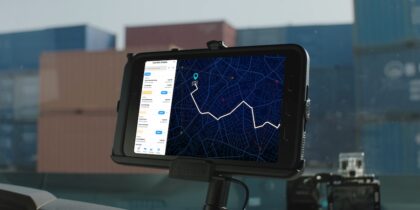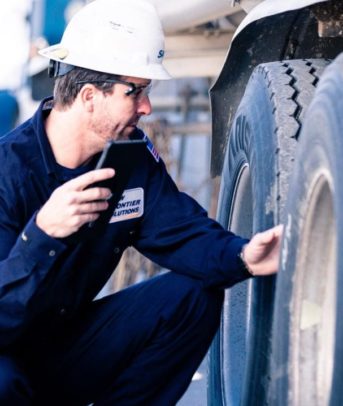Fleet management used to be a matter of planning ahead: drawing up routes, locking in schedules and evaluating performance after the fact. But increasingly, that model can’t keep pace with delivery demands.
Today’s customers expect real-time visibility and on-time arrivals, not updates that lag behind the actual route. When delays occur, customers expect answers. When disruptions happen, they expect solutions. In fact, more than half (58%) of survey respondents identified real‑time delivery tracking as their top priority, with transparency ranking second at 38%.1
Fleet managers are expected to reduce costs, meet environmental targets, improve safety and increase delivery reliability—and that’s where integrated, real-time systems come in.
Legacy planning meets real-time pressure
The global fleet management market—valued at $23.4 billion in 2024—is projected to surge to nearly $97.6 billion by 2034, growing at a 16% compound annual rate.2 That growth is putting a pressure on fleet managers, many of whom still rely on static planning, disconnected tools and legacy systems. A recent industry survey found that while GPS tracking is now standard in approximately 70% of fleets, some still rely on spreadsheets or isolated platforms to manage key tasks.6 This fragmentation slows decision-making and limits the impact of even the most advanced technologies.
Fuel remains one of the biggest operating expenses in logistics. In 2024, the average cost to operate a truck hit $2.26 per mile, with fuel alone accounting for $0.48 (or roughly 21% of total costs).3 In response, many organizations are investing in solutions that optimize fuel usage, such as real-time route planning and driver behavior monitoring. These efforts are paying off: fleets that adopt these tools report fuel savings of up to 16%.4
Rugged mobile devices like the Galaxy Tab Active5 and Galaxy XCover7 Pro give drivers and field teams durable, always-connected tools to access route updates, telematics, and diagnostics in real time, helping establish fuel optimization as a consistent, daily practice.
Plus, with real-time insights into vehicle diagnostics, location data, and idle time, fleet managers can identify risks before they escalate. They can reroute vehicles around traffic, flag risky driving behavior early and take preventive action to reduce unplanned downtime.
At the management level, Samsung’s Knox Suite gives fleet operators full control of their device ecosystem. That means secure updates pushed over the air, remote troubleshooting in the field, and visibility into device health alongside vehicle performance.
When it comes to improving safety, AI-equipped dash cams have helped organizations reduce accidents by 22% and unsafe driving incidents by 56%, thanks to instant feedback loops and targeted coaching programs.5 Wearable solutions like Samsung’s GearUP app for Galaxy Watch add another layer of protection, enabling lone drivers and field workers to stay connected with two-way messaging and rapid emergency access.
Leading fleets are setting the pace
Penske Truck Leasing offers a compelling example of real-time fleet management at scale. Through its Catalyst AI platform, Penske oversees a fleet of more than 433,000 vehicles, analyzing over 100 billion data points annually and running 300+ machine learning models to support proactive maintenance, intelligent dispatch and driver safety.7 This level of automation and insight leads to fewer breakdowns, greater uptime, and higher levels of service across the fleet.
While not every organization requires a custom AI platform, all can benefit from connected infrastructure. Modern connected fleet solutions combine edge-powered hardware, real-time analytics and integrated platforms to deliver end-to-end visibility. These tools help fleet managers optimize routing while supporting drivers with live coaching and feedback.
The result? Fleets that are not only more efficient but more resilient, responsive and future-ready.
Ready to manage production with precision? Retailers can now operate as though they own the factory, but without the fixed costs. If you’re overseeing outsourced production, or thinking about it, see how Samsung IoT and automation solutions can help.
1 2024 DSCI New Customer Survey Report, Digital Supply Chain Institute, Accessed 20 August 2025.
2 Fleet Management Market Size, Global Market Insights, February 2025.
3 New ATRI Report Shows Trucking Profitability Severely Squeezed by High Costs, Low Rates, American Transportation Research Institute, 1 July 2025.
4,6 2025 Fleet Technology Trends Report, Verizon Connect.
5 AI Dash Cams vs Traditional: What’s Driving Safer Fleets, IntelliShift.
7 Penske is using AI to get ahead of costly truck maintenance issues, Business Insider, 2 July 2025.








